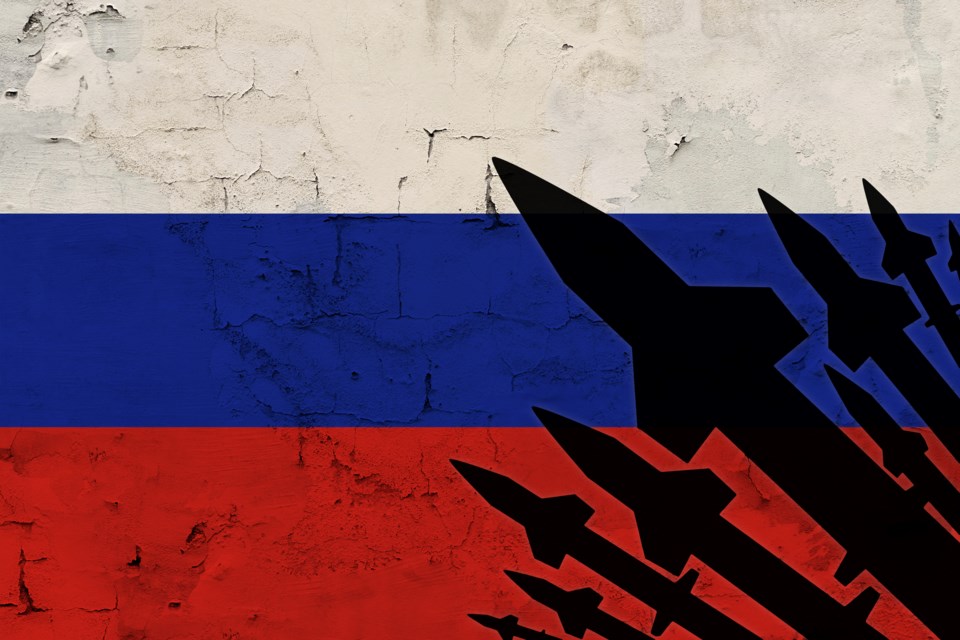The war started by Vladimir Putin against Ukraine is not unfolding as he expected it would.
His attempts to play the Cold War game of making by NATO.
. His expectation that turned out to be wrong.
Russian troops have failed to seize any of Ukraine’s major cities, , and may .
Putin’s bet was so risky because, according to my research, allow — if not encourage — excessive risk-taking and gambling in the highest offices.
Intimidation did not work
Putin’s Plan A was to coerce Ukraine to change its stated intention to join NATO by threatening the country. Since November 2021, there have been warnings that a suggested a war in Ukraine would likely break out by the spring of 2022.
Around the same time, Moscow disclosed a to the West that included a ban on NATO expansion eastward. It threatened to deploy “military-technical measures” if NATO did not recede.
In late January 2022, Ukrainian President Volodymyr Zelensky .”
As with threats made during the Cold War, much depended on Putin’s credibility. According to Thomas Schelling, who won a Nobel Prize in economics for his research on conflict, only a pays off: “The threat … makes one worse off than he need be in the event the tactic fails.”
To make a threat credible, the opponent’s choices and possible strategies must be properly assessed. Putin underestimated Zelensky’s perseverance and the constitutional requirements expected of him. declares “the strategic course of the state on acquiring full-fledged membership of Ukraine in the European Union and in the North Atlantic Treaty Organization.”
No blitzkrieg
Putin’s Plan B was a blitzkrieg. Russia’s invasion of Ukraine began on Feb. 24, 2022, with massive shelling that was likely aimed at instilling fear and awe in Ukraine’s leaders and population. Putin probably expected Ukrainians to become demoralized and flee if they were able to.
Russian documents seized by Ukrainian troops on March 2 suggest that the military phase of the invasion was expected of its start. Planning and supplies didn’t extend beyond this time frame.
That deadline for seizing control of Ukraine hasn’t been met. Russian troops have made , though Ukraine in the aftermath of the recent deadly bombing of a military base close to the Polish border.
Russia has suffered heavy losses on all fronts. Even according to conservative estimates, several thousand Russian troops have lost their lives while according to Zelensky, Ukraine’s losses for the same period.
No ‘Russian Spring’
Shortly after the invasion, some Russian media on new “people’s republics” and Russia as an alternative to the Ukrainian state.
This déjà vu script was clearly inspired by the “” in 2014 when Russia managed to stage referendums in the seized territories of Donbas and Crimea, resulting in the emergence of self-declared republics in those regions.
This time, no Russian Spring is forthcoming. Instead of citizens greeting Russian troops as liberators, they are met with , even in the regions where Russian speakers prevail. This is similar to conflicts with Russia. Both Finns and Chechens managed to contain and ultimately repulse the more potent opponent with the help of mass mobilization and high morale.
When Russian occupants recently attempted to distribute food to , a regional capital in the southern Ukraine temporarily seized by Russian troops, and to film the process for the purposes of propaganda, the city’s residents stood by waving Ukrainian flags.
We are witnessing the true birth of the Ukrainian nation — exactly the opposite of what Putin was hoping to see by . It’s not just the Ukrainian army containing the invasion — Ukraine’s people are too.
Wrong on all counts
Putin’s clear miscalculations have led some observers to speculate about his . But there may be an institutional explanation for his troubles, rather than psychological or medical. When power is not constrained, its holders tend to take excessive risks regardless of mental stability.
That’s because they believe everything’s permitted. The absence of creates an impression that the terrible consequences of a bad decision , at least until accumulated errors produce a disaster.
Not many heads of the state in the world face fewer constraints than Putin. The model of power that prevails in Russia is very close to absolute power with no strings attached.
Putin controls nuclear weapons, which lessens if not removes geopolitical constraints. It comes as no surprise that he put Russia’s nuclear force as soon as the war started to go awry.
Russia is well-endowed in natural resources. (), particularly oil and gas, represented more than 13 per cent of Russia’s GDP in 2019. Russia is among the top 20 natural resources economies of the world, according to this criterion.
Recent changes in Russia’s constitution allow Putin to serve presidential terms. The Russian leader’s only , Alexei Navalny, is behind prison bars on what he describes , .
This means there’s no incentive for Putin to be rational and cautious when making decisions that have profound consequences on the world. He doesn’t expect to pay the price for his errors — a perfect example of how absolute power corrupts absolutely.
![]()
Anton Oleinik does not work for, consult, own shares in or receive funding from any company or organization that would benefit from this article, and has disclosed no relevant affiliations beyond their academic appointment.




